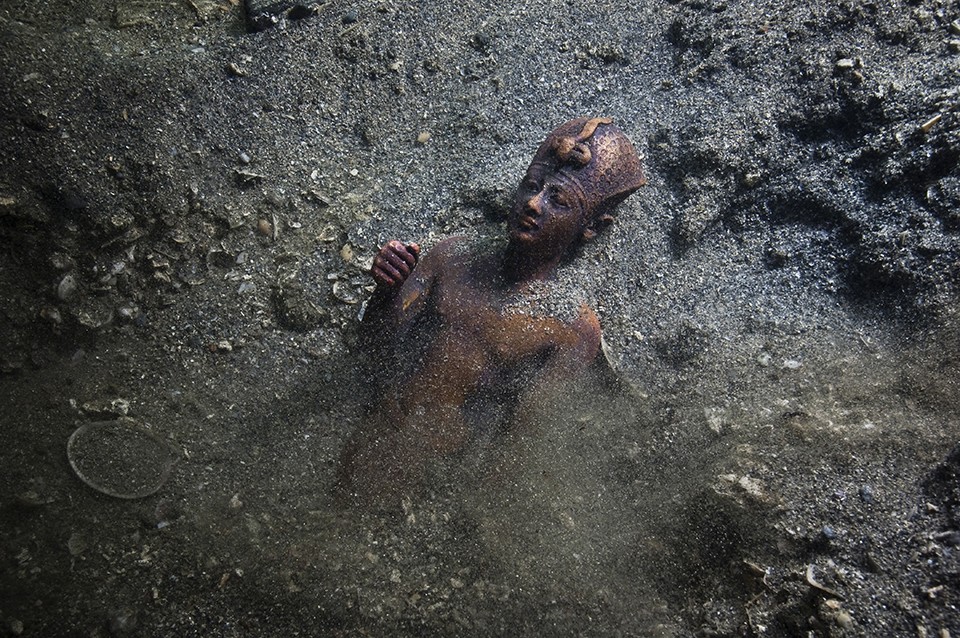This is a past event.

Bronze statuette of a pharaoh, Thonis-Heracleion, Aboukir Bay, Egypt; 30th–26th dynasty; height: 8 1/16 inches; (SCA 1305); IEASM Excavations Photo: Christoph Gerigk © Franck Goddio/Hilti Foundation
Sunken Cities: Egypt's Lost World
The ancient city of Thonis-Heracleion was Egypt's main Mediterranean port from 664 to 332 BC, or roughly 100 years longer than the country of America has existed. It was a thriving, international metropolis — and then a string of natural disasters wiped it off the map. Archeologist Franck Goddio and his team of underwater archeologists rediscoverd Thonis-Heracleion 1,000 years later, four miles off the coast of present-day Egypt. It was more than 30 feet below the surface of the sea, its colossal statues of gods, pharaohs and ritual animals resting in the ruins of a world long gone. Three of these massive statues comprise the heart of the new exhibition Sunken Cities: Egypt's Lost Worlds, which will be on display at the Saint Louis Art Museum (1 Fine Arts Drive; www.slam.org) Tuesday through Sunday (March 25 to September 9). Alongside the trio of statues are more than 200 ceremonial and commercial artifacts (bronze vessels, coins, jewelry) found both on the sea floor and on loan from museums in Cairo and Alexandria. Admission to the exhibit is $8 to $20, and free on Friday.
— Paul Friswold
Nearby
-
0.03 miles
-
0.06 miles
-
0.06 miles
-
0.19 miles
-
0.26 miles




